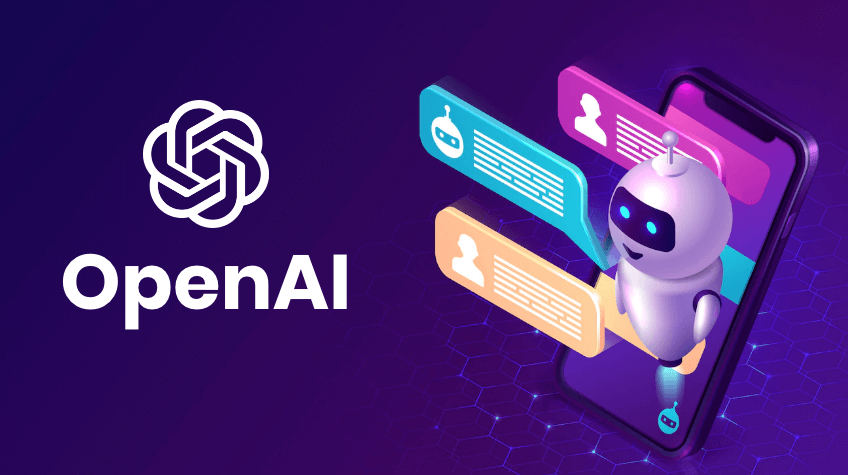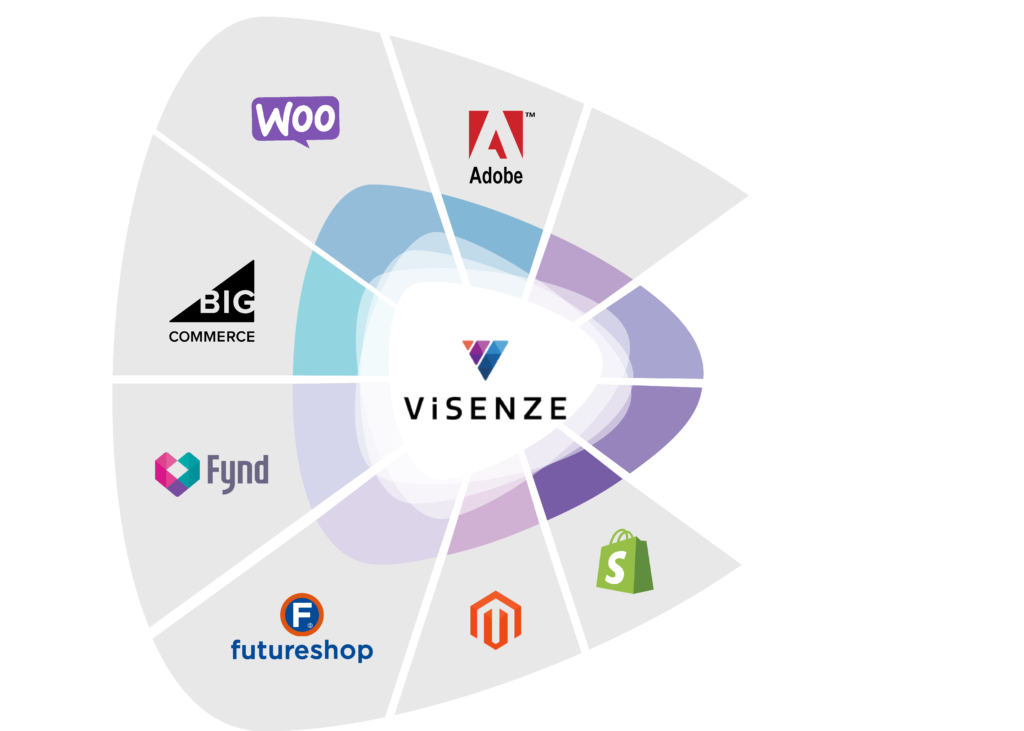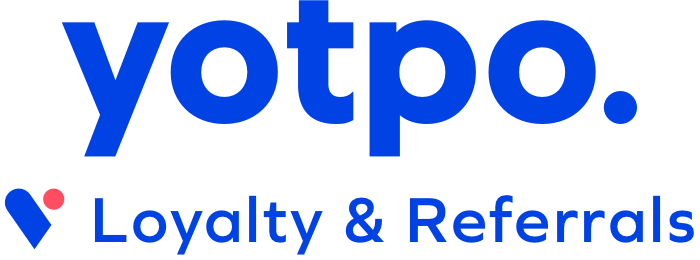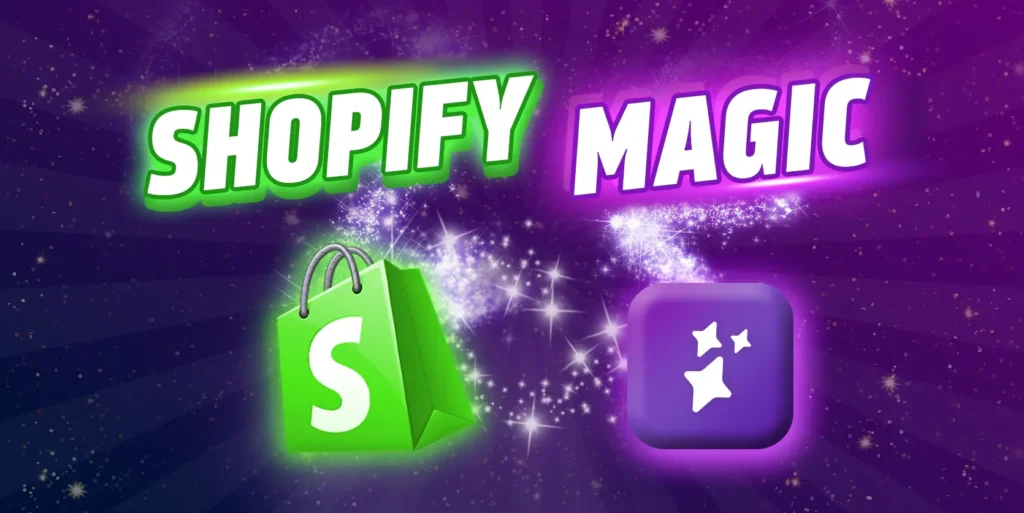Introduction
The retail and e-commerce landscape is undergoing an AI revolution. From personalized shopping experiences to automated inventory management, artificial intelligence is helping businesses of all sizes compete more effectively. In this comprehensive guide, we’ll explore the top 10 AI Tools for Retail & E-commerce in 2024, complete with:
- Detailed overviews of each tool
- Step-by-step implementation guides
- Real-world case studies
- Objective pros and cons
- Answers to frequently asked questions
- A framework for choosing the right solution

How to Choose the Right AI Tool
Selecting the ideal AI solution requires careful consideration of several factors:
Key Selection Criteria
- Business Objectives
- Customer service automation
- Personalized recommendations
- Inventory optimization
- Visual search capabilities
- Technical Requirements
- Platform compatibility (Shopify, WooCommerce, etc.)
- API accessibility
- Data security standards
- Resource Availability
- Implementation budget
- Technical team expertise
- Training requirements
- Scalability
- Ability to handle traffic spikes
- Multi-language support
- Regional customization
- ROI Considerations
- Expected conversion lift
- Customer service cost savings
- Implementation timeline
Top 10 AI Tools for Retail & E-commerce
1. ChatGPT (by OpenAI)
Overview
OpenAI’s ChatGPT has become indispensable for e-commerce businesses, offering versatile applications from customer service to content creation.

Implementation Guide
- Integration Options:
- Direct API implementation
- Shopify app marketplace solutions
- Zapier automation workflows
- Training Process:
- Feed product catalog data
- Input return/refund policies
- Train on common customer queries
- Deployment Strategies:
- 24/7 chatbot implementation
- Email response automation
- Product description generation
Case Study: Sephora’s Virtual Artist
- Challenge: High volume of product queries
- Solution: ChatGPT-powered beauty advisor
- Results: 11% increase in conversion, 30% reduction in support tickets
Pros & Cons
| ✅ Advantages | ❌ Limitations |
|---|---|
| Natural conversation flow | Limited product-specific knowledge |
| Multilingual capabilities | Requires ongoing training |
| Continuous learning | Can’t process transactions |
FAQ
Q: Can ChatGPT integrate with my existing CRM?
A: Yes, through API connections or middleware solutions.
Q: Is specialized hardware required?
A: No, it’s entirely cloud-based.
2. Dynamic Yield (by McDonald’s)
Overview
This enterprise-grade personalization platform delivers tailored shopping experiences at scale.

Implementation Guide
- Initial Setup:
- Customer data integration
- Behavior tracking implementation
- Rule engine configuration
- Campaign Types:
- Product recommendation widgets
- Personalized email campaigns
- Dynamic landing pages
- Optimization:
- A/B testing framework
- Performance analytics
- Algorithm refinement
Case Study: Urban Outfitters
- Challenge: Low email engagement rates
- Solution: Behavior-triggered email personalization
- Results: 25% higher open rates, 18% increase in click-through
Pros & Cons
| ✅ Strengths | ❌ Weaknesses |
|---|---|
| Enterprise-grade features | Steep learning curve |
| Cross-channel consistency | High cost for SMBs |
| Advanced segmentation | Requires dedicated team |
FAQ
Q: What’s the minimum contract length?
A: Typically 12 months for enterprise plans.
Q: Does it support physical retail?
A: Yes, with beacon and in-store integration options.
3. ViSenze (AI-Powered Visual Search)
About/Introduction
ViSenze revolutionizes product discovery through visual AI, enabling shoppers to search using images instead of text. The Singapore-based platform uses deep learning to analyze product attributes like color, shape, and pattern.

Key Features:
- Visual search API
- Automatic product tagging
- Similar product recommendations
- Shoppable galleries
Pricing: Starts at $500/month with custom enterprise plans available.
How to Use ViSenze
Implementation Steps:
- Integrate the JavaScript SDK into your e-commerce platform
- Set up image recognition for your product catalog
- Configure the visual search interface
- Implement recommendation widgets
Best Practices:
- Use high-quality product images (minimum 800x800px)
- Tag products with at least 5 attributes
- Place visual search prominently on category pages
Case Study: Myntra (Fashion E-commerce)
Challenge: High bounce rates from shoppers who couldn’t describe what they wanted
Solution: Implemented ViSenze visual search
Results: 23% increase in conversions, 18% higher average order value
Pros & Cons
| ✅ Pros | ❌ Cons |
|---|---|
| Reduces search abandonment | Requires quality product images |
| Increases discovery of similar items | Higher cost for small businesses |
| Mobile-friendly implementation | Limited effectiveness for textural products |
FAQ
Q: Does ViSenze work with videos?
A: Yes, it can extract frames from videos for analysis.
Q: What platforms does it integrate with?
A: Shopify, Magento, WooCommerce, and custom solutions.
4. Recombee (AI Recommendation Engine)
About/Introduction
Recombee provides personalized product recommendations using machine learning algorithms that analyze user behavior in real-time.
Key Features:
- Behavioral targeting
- Context-aware suggestions
- A/B testing dashboard
- Fraud detection
Pricing: Free plan available, paid plans start at $299/month.
How to Use Recombee
Implementation Guide:
- Install the tracking script
- Feed historical transaction data
- Set up recommendation scenarios
- Configure the UI placements
Advanced Tips:
- Combine with email marketing
- Use for cart abandonment flows
- Implement for loyalty program suggestions
Case Study: Notino (Beauty Retailer)
Challenge: Low engagement with recommended products
Solution: Implemented Recombee’s AI engine
Results: 32% increase in recommendation clicks, 15% boost in revenue
Pros & Cons
| ✅ Advantages | ❌ Limitations |
|---|---|
| Real-time adaptation | Steep learning curve |
| GDPR-compliant | Limited design customization |
| Handles cold-start problem | Requires minimum 1,000 products |
FAQ
Q: How long until results are visible?
A: Typically 2-4 weeks as the AI learns.
Q: Does it work for B2B e-commerce?
A: Yes, with proper configuration.
5. Clerk.io (E-commerce AI)
About/Introduction
Clerk.io offers an all-in-one AI solution for search, recommendations, and merchandising tailored for mid-market retailers.

Key Features:
- Semantic search
- Personalized rankings
- Automated merchandising
- Predictive analytics
Pricing: Starts at $50/month with volume-based pricing.
How to Use Clerk.io
Setup Process:
- Connect your product feed
- Configure search rules
- Set up recommendation widgets
- Install tracking pixel
Optimization Tips:
- Boost seasonal products
- Demote out-of-stock items
- Create synonym dictionaries
Case Study: Boozt (Nordic Fashion Retailer)
Challenge: Ineffective search results
Solution: Implemented Clerk’s AI search
Results: 27% higher search conversion, 40% fewer zero-result searches
Pros & Cons
| ✅ Strengths | ❌ Weaknesses |
|---|---|
| Easy setup | Limited A/B testing |
| Good for European markets | Basic reporting |
| Affordable for SMBs | Few third-party integrations |
FAQ
Q: Does it support multiple languages?
A: Yes, including Nordic languages.
Q: Can I prioritize certain products?
A: Yes, through the merchandising dashboard.
6. Algolia (AI-Powered Search)
About/Introduction
Algolia delivers lightning-fast, relevant search results with typo tolerance and advanced merchandising capabilities.

Key Features:
- Instant search results
- AI-powered relevancy
- Analytics dashboard
- Synonyms management
Pricing: Free trial, paid plans start at $99/month.
How to Use Algolia
Implementation:
- Index your product catalog
- Implement search UI
- Configure ranking rules
- Set up analytics
Best Practices:
- Use query suggestions
- Implement faceted search
- Monitor search terms report
Case Study: Lacoste
Challenge: Poor mobile search experience
Solution: Algolia’s instant search
Results: 50% faster search results, 15% higher conversion
Pros & Cons
| ✅ Benefits | ❌ Drawbacks |
|---|---|
| Excellent speed | Complex ranking rules |
| Great documentation | Higher cost at scale |
| Strong security | Requires technical resources |
FAQ
Q: How often is the index updated?
A: Near real-time (seconds to minutes).
Q: Does it work with headless commerce?
A: Yes, through API.
7. Syte (Visual AI)
About/Introduction
Syte provides visual AI solutions focused on fashion and home decor, enabling visual search and automated tagging.

Key Features:
- Visual similarity search
- AI-powered tagging
- Outfit recommendations
- Trend analysis
Pricing: Custom pricing for enterprise.
How to Use Syte
Implementation Process:
- Product image processing
- Attribute tagging
- Visual search implementation
- Recommendation engine setup
Optimization:
- Use for outfit building
- Implement for “complete the look”
- Connect with social media
Case Study: Farfetch
- Challenge: Manual tagging inconsistencies
- Solution: Syte’s AI tagging
- Results: 90% reduction in tagging time, 22% more accurate tags
Pros & Cons
| ✅ Pros | ❌ Cons |
|---|---|
| Excellent for fashion | Expensive |
| Reduces manual work | Long implementation |
| Strong visual matching | Requires quality images |
FAQ
Q: Can it recognize specific brands?
A: Yes, when properly trained.
Q: Does it work for user-generated content?
A: Yes, with some limitations.
8. Yotpo (AI Reviews & Loyalty)
About/Introduction
Yotpo leverages AI to maximize the impact of user-generated content through smart review display and loyalty automation.

Key Features:
- Review generation
- Sentiment analysis
- Loyalty automation
- Visual UGC display
Pricing: Free plan available, paid from $29/month.
How to Use Yotpo
Setup Guide:
- Install review collection
- Configure display widgets
- Set up loyalty program
- Implement email automation
Advanced Uses:
- Product page optimization
- Social proof marketing
- Customer segmentation
Case Study: Gymshark
Challenge: Low review collection
Solution: Yotpo’s automated system
Results: 3x more reviews, 18% conversion lift
Pros & Cons
| ✅ Advantages | ❌ Limitations |
|---|---|
| Easy to implement | Basic free plan |
| Great for social proof | Limited customization |
| Good email templates | Can be expensive |
FAQ
Q: Does it integrate with Shopify?
A: Yes, native integration.
Q: Can I export reviews?
A: Yes, full export capability.
9. Shopify Magic (Built-in AI)
About/Introduction
Shopify’s native AI tools help merchants automate tasks and enhance their stores without technical expertise.

Key Features:
- AI product descriptions
- SEO optimization
- Email template generation
- Chatbot builder
Pricing: Included in Shopify plans.
How to Use Shopify Magic
Implementation:
- Access through admin panel
- Generate product content
- Optimize SEO elements
- Set up automated emails
Best Practices:
- Combine with human editing
- Use for seasonal updates
- Implement for international stores
Case Study: Brooklinen
Challenge: Scaling content creation
Solution: Shopify Magic implementation
Results: 5x faster content production, 12% SEO traffic increase
Pros & Cons
| ✅ Strengths | ❌ Weaknesses |
|---|---|
| No extra cost | Limited features |
| Easy to use | Basic AI capabilities |
| Seamless integration | Only for Shopify |
FAQ
Q: Is it available on all plans?
A: Yes, including Basic.
Q: Can I edit the AI output?
A: Yes, fully editable.
10. Google Cloud Retail AI
About/Introduction
Google’s enterprise retail AI solution offers powerful recommendation and search capabilities backed by Google’s machine learning.

Key Features:
- Personalized recommendations
- Advanced search
- Demand forecasting
- Inventory optimization
Pricing: Custom enterprise pricing.
How to Use Google Retail AI
Implementation Process:
- Data preparation
- Model training
- API integration
- Performance tuning
Advanced Features:
- Multi-channel personalization
- Predictive analytics
- Automated merchandising
Case Study: Home Depot
Challenge: Improving online search
Solution: Google Retail AI implementation
Results: 25% better search accuracy, 18% higher conversions
Pros & Cons
| ✅ Benefits | ❌ Challenges |
|---|---|
| Powerful algorithms | Requires technical team |
| Google infrastructure | Expensive |
| Continuous improvement | Long setup time |
FAQ
Q: Does it integrate with physical stores?
A: Yes, through Vertex AI.
Q: What data is required?
A: Product catalog and user behavior data.

Comparative Analysis Table
| Tool | Best For | Starting Price | Free Option | Implementation Time |
|---|---|---|---|---|
| ChatGPT | Customer Service | Free | Yes | 1-3 days |
| Dynamic Yield | Personalization | Enterprise | No | 4-8 weeks |
| ViSenze | Visual Search | $500/mo | Trial | 2-4 weeks |
| Recombee | Recommendations | $299/mo | Yes | 1-2 weeks |
| Clerk.io | Search & Discovery | $50/mo | No | 3-5 days |
| Algolia | Site Search | $99/mo | Trial | 1-2 weeks |
| Syte | Visual AI | Custom | No | 6-8 weeks |
| Yotpo | Reviews & Loyalty | $29/mo | Yes | 1 week |
| Shopify Magic | Content Creation | Included | Yes | Immediate |
| Google Retail AI | Enterprise Solutions | Custom | No | 8-12 weeks |
Implementation Roadmap
- Assessment Phase (1-2 weeks)
- Audit current technology stack
- Identify key pain points
- Set measurable KPIs
- Allocate budget
- Selection Process (2-4 weeks)
- Create shortlist based on needs
- Conduct vendor evaluations
- Run proof-of-concept tests
- Finalize cost-benefit analysis
- Deployment (1-12 weeks)
- System integration
- Staff training program
- Gradual rollout strategy
- Initial performance monitoring
- Optimization (Ongoing)
- Continuous A/B testing
- Regular performance reviews
- Algorithm refinement
- Scaling successful implementations
Emerging Trends in Retail AI
- Generative AI for Commerce
- Automated product descriptions
- Dynamic pricing optimization
- Personalized marketing copy
- Computer Vision Advancements
- Virtual try-on experiences
- Shelf monitoring in physical stores
- Automated quality control
- Predictive Customer Service
- Preemptive issue resolution
- Sentiment-based routing
- Conversation analytics
- Unified Commerce AI
- Cross-channel personalization
- Inventory intelligence
- Fulfillment optimization
Final Recommendations
For Small Businesses:
- Start with ChatGPT for customer service
- Implement Yotpo for reviews
- Use Shopify Magic if on Shopify
For Mid-Market Retailers:
- Clerk.io for search
- Recombee for recommendations
- ViSenze for visual search
For Enterprises:
- Dynamic Yield for omnichannel personalization
- Google Retail AI for advanced analytics
- Syte for visual commerce

Conclusion
The AI tools landscape offers solutions for every retail need and budget. While enterprise solutions like Dynamic Yield provide comprehensive platforms, SMBs can start with focused tools like ChatGPT or Recombee. The key is aligning technology choices with specific business objectives and ensuring proper implementation support.
Ready to transform your retail operations? Begin with one high-impact area and expand your AI capabilities progressively.
